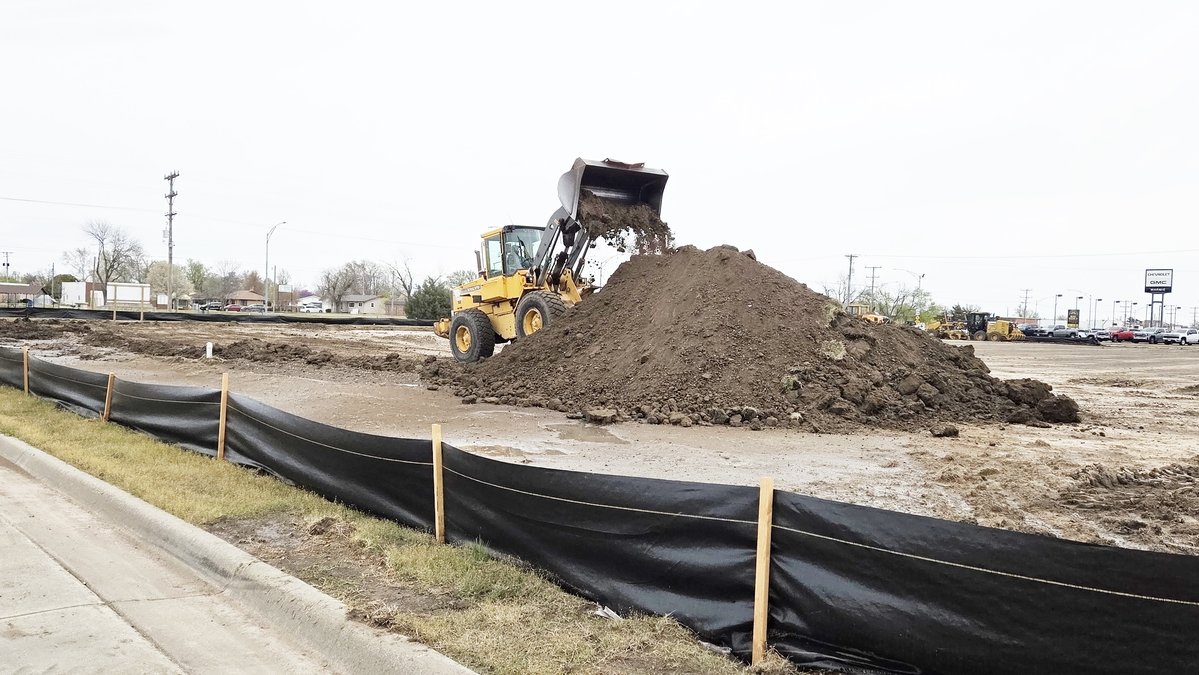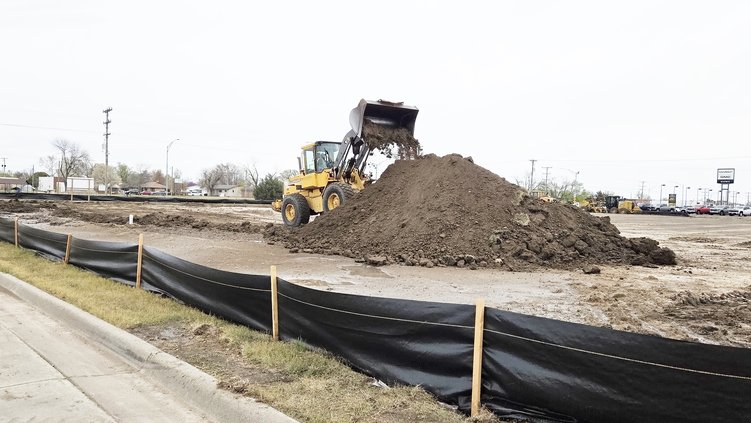By Keith Lippoldt
klippoldt@gbtribune.com
The National Weather Service is forecasting a potential winter storm that is threatening to bring heavy snow and dangerous ice and frigid temperatures across western and central Kansas, including Great Bend and the Golden Belt. This storm is predicted to affect traffic all the way east to the Mid-Atlantic this week.
Forecasters are predicting drizzle turning to freezing rain and ice to begin falling late afternoon and early evening today with additional snow falling Sunday. KWCH Meterologist Ross Janssen said that the north/south line of heavier snow will depend on the exact evolution of the storm, but said Great Bend could receive anywhere from 3-10 inches through Sunday night. North central and northeast Kansas can expect up to 10 inches of snow. The NWS said there is also potential for significant sleet and freezing rain to impact eastern and southeastern Kansas this weekend.
The most dangerous aspect of the potential storm is the ice that will have fallen before the snow, creating dangerous roadways.
The NWS also says that high pressure is expected to build over the Great Plains, sending “frigid arctic air” down through the Central and Eastern U.S. through the weekend. Travel is not recommended.
With this storm being the first of the season and possibly being extreme, several safety factors need to be addressed for your home, your pet and your vehicle. Special care should also be taken when young infants and senior adults are taken out into the frigid elements.
The City of Great Bend has been proactive on treating streets before the storms hit. That will not be changing this season as they are already preparing to pre-treat the streets.
“Whenever these events come in, we get very, very busy in ensuring that our equipment is up to specs and that we have the proper amount of salt and sand, making sure that our brine is being made,” said Great Bend Director of Public Works Jason Cauley in an interview on KWCH-TV.
The NWS said uncertainty remains “regarding the timing and location of the storm track, which will be important in determining where the most significant impacts will occur.” The service said there was “growing confidence” that a storm will produce “significant wintry weather.” Meteorologists are also warning that several rounds of arctic air is “poised to plunge into the central and eastern United States,” with each outbreak having the potential to bring colder air further south than the previous round.
“If the weather that’s coming in actually hits us, I would advise just staying home,” Cauley said.
Safety first
When traveling on icy roads, extreme caution and focus must be taken to help you stay safe. First and foremost, stay home unless it is an emergency. If you must go:
• Reduce your speed so you have more time to react.
• Increase your following distance to allow more stopping time.
• Brake gently to avoid skidding.
• Avoid attempting sudden stops or turns.
• Stay informed of the conditions to where you are traveling and when planning your route, take the main highways because they have most likely been treated or plowed. Always share your route with family or friends.
• Have your emergency kit in the vehicle.
• If you do start to skid, steer in the direction you want to go.
Protect your pets
Some animals do not have the privilege of being inside in inclement weather. For those with outdoor animals, a little preparation could be the difference of survival, serious injury or worse.
• Provide adequate shelter. Ensure your pet has a warm, dry shelter. The shelter should be insulated and have dry bedding such as blankets or straw.
• Fresh water is a necessity for survival. Heated water bowls prevent water from freezing and are available at local stores.
• Shivering burns calories so it is important to feed them more calories in the winter.
• Check their paws daily to remove ice, embedded salt or to check for sores created by freezing weather.
• If your animal is showing signs of distress, bring them inside. Consult a vet if necessary.
Winterize your home
Winterizing your home will help keep it warm and cut down the cost to heat it. There are several inexpensive fixes you can do yourself.
• Seal any gaps in windows, doors and walls where cold air can enter. Use caulk or weatherstripping material to seal them.
• Insulate exposed pipes in insulation or heat tape to prevent them from bursting.
• Reverse your ceiling fan to clockwise to force the warm air down to keep rooms warmer.
• Check your heating system as well as smoke and carbon monoxide detectors. Having a professional inspect your heating system will ensure it’s running safely and efficiently. Heating systems can produce carbon monoxide so it’s crucial to have functioning detectors.








